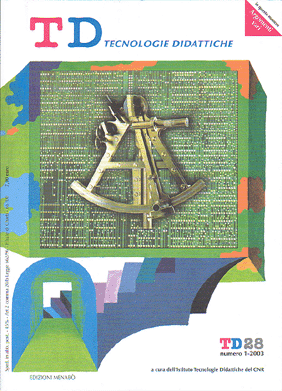Philosophy mediated by technology
Main Article Content
Abstract
Article Details
Section
Authors who publish with this journal agree to the following terms:
- Authors retain copyright and grant the journal right of first publication with the work simultaneously licensed under a Creative Commons CC BY 4.0 Attribution 4.0 International License.
- Authors are able to enter into separate, additional contractual arrangements for the non-exclusive distribution of the journal's published version of the work (e.g., post it to an institutional repository or publish it in a book), with an acknowledgement of its initial publication in this journal.
- Authors are permitted and encouraged to post their work online (e.g., in institutional repositories or on their website) prior to and during the submission process, as it can lead to productive exchanges, as well as earlier and greater citation of published work (See The Effect of Open Access)
References
Brown A.L. e Campione J.C. (1990), Communities of learning and thinking: Or a context by any other name, Human Development, n. 21, pp. 108-125.
Bruckman A. (2000), Situated support for learning: Storm’s weekend with Rachel, Journal of the Learning Sciences, n.9, pp. 329-372.
Bruner J. (1998), La cultura dell’educazione, Feltrinelli, Milano.
Calvani A. e Rotta M. (2000), Fare formazione in Internet, Erickson, Trento.
Cesareni D. e Caravita S. (in corso di stampa), Pensiero individuale, pensiero collettivo: processi collaborativi a vari livelli, dal gruppo alla rete, in M. Beatrice Ligorio e S. Caravita (a cura di) Costruzione collaborativa di conoscenze: dal gruppo in classe al gruppo in rete, Istituto Carlo Amore, Roma.
Cesareni C., Ligorio M.B., Pontecorvo C. (2001), Discussione e argomentazione in un forum universitario, TD - Tecnologie Didattiche, vol. 24, n. 3, pp. 55-65.
Cosentino A. (1991), Lipman e la Philosophy for children, Bollettino SFI, n. 142.
Fasulo A. e Pontecorvo C. (1999), Come si dice, Carocci, Roma.
Garrison D. R. (1992), Critical thinking and selfdirected learning in adult education: an analysis of responsibility and control issues, Adult Education Quarterly, n. 42 (3), pp.136-148.
Kaye A. (1994), Apprendimento collaborativo basato sul computer, TD - Tecnologie Didattiche, n. 4, Autunno 1994, pp. 9-21.
Koschmann T. (2002), Dewey’s contribution to the foundations of CSCL Research, in G. Stahl (a cura di) Atti del Convegno Computer Supported Collaborative Learning, Boulder, Colorado, pp. 17-22.
Ligorio, M.B. (1996), Le comunità di Apprendimento: tutti apprendisti, tutti scienziati, tutti insegnanti, in Trentin G. (cura di) Didattica in rete: internet, telematica e cooperazione educativa, Edizioni Garamond, Roma, pp. 71-81.
Lipman M. (1988), Critical thinking. What can it be?, Educational Leadership, n. 46(1), pp. 38-43.
Lumbelli L. (1985), Psicologia dell’educazione. La comunicazione, Il Mulino, Bologna.
Miller L., Connelly M. (1996), Critical thinking across the curriculum project, Lee’s Summit, Missouri - U.S.A.
Melchiori R. (2000), La tecnologia dell’informazione e della comunicazione nell’istruzione scolastica. I risultati del secondo studio internazionale Iea-Sites, FrancoAngeli- Cede, Roma.
Napodano M. (1998), Philosophy for children, Alfredo Guida Editore, Napoli.
Newman D. R. (1996), How can WWW-based groupware better support critical thinking in CSCL?, in U. Busbach, D. Kerr e K. Sikkel (eds) CSCW and the Web - Atti del 5th ERCIM/W4G Workshop, Sankt Augustin, Germania.
Pinto G. e Bombi A.S. (1999), Sistemi simbolici e notazione figurativa. in C. Pontecorvo (a cura di) Manuale di psicologia dell’educazione, Il Mulino, Bologna, pp. 115- 143.
Pontecorvo C. (a cura di) (1999), Manuale di psicologia dell’educazione, Il Mulino, Bologna.

